Imagine purifying a 21,000 meter long garden hose from ketchup - or a similar behaving asphaltene inhibitor, subsea. It is now possible with SCCO2 turbulent flow.
Scope of Work
Purifying umbilical from the main platform 18,000 meters across to the satellite platform and 3,100 meter deep into the production string. Pumping the liquid through an I.D.12 mm. requiring ridding the pipe system of debris not to harm the flow.
Client decides to define the cleanliness of the asphaltene inhibitor system and the complete transport system to a Nas Class 8.
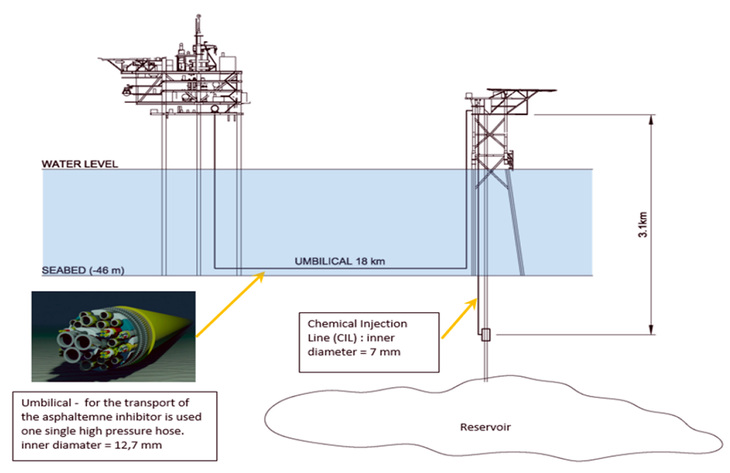
Flushing from main platform to satellite and back, loop on main platform.
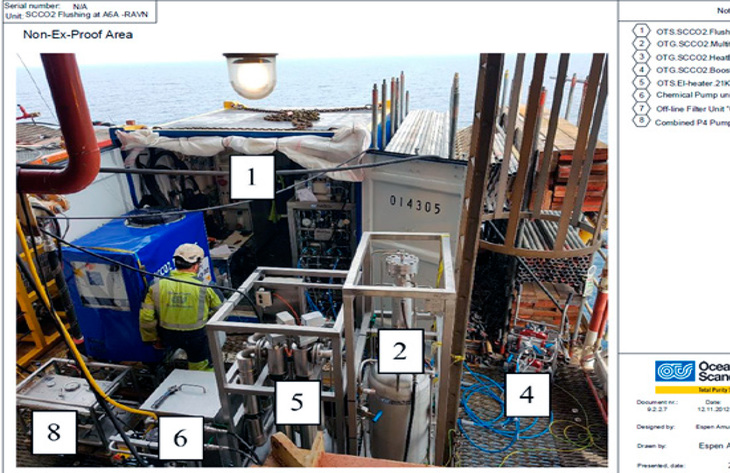
Set-up in non-ATEX area. Sub-units are connected for all units to work like one.
Lack of Normal Procedure
The client experiences that normal cleaning procedure using high pressure hoses and pipelines, as normal standard for the entire oil & gas industry, is not sufficient for the above aim.
During flushing, the system needs further stress to release contaminating particles from the tube and the tube boundary layer that may include a wax or an oil residue layer containing particles.
System Set-Up
The flushing is performed from the main platform to the satellite platform and back, with a loop on the main platform.
The system is set-up in an area where ATEX rating is not required according to the client technology program, including risk remediated placing of ‘Sniffers.
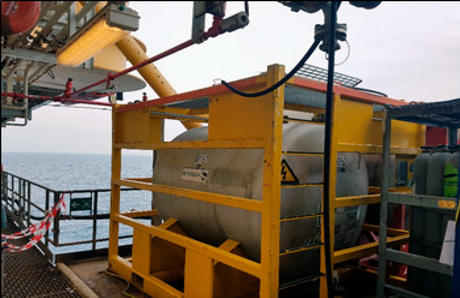
Emptying of line went into a separate tank to start out with a high turbulent flow (high Reynolds number).
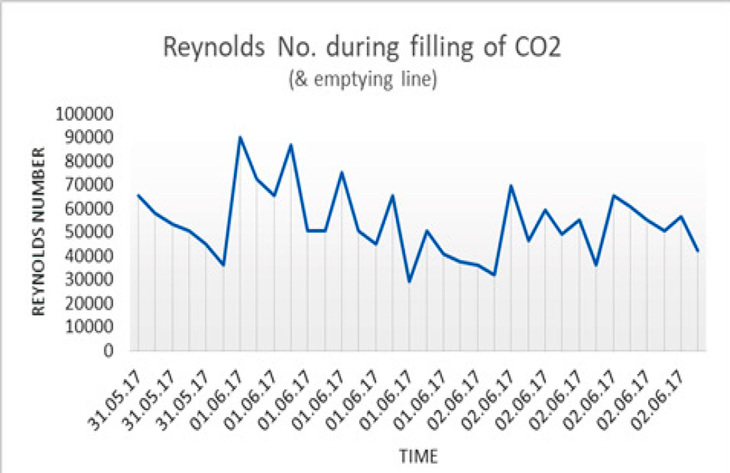
The Reynolds number peaked at 90.000 during filling of CO2 (and emptying of line).
Process
6,500 liters are emptied from the umbilical on a fast track as extra pump capacity matches the waste tank size.
At every flow point measurement the Reynolds number is calculated.
Filling of the umbilical is followed by flushing. During flushing, samples are taken every few hours to ensure continuous flushing until the line is clean as lines vary in contamination level and contamination type.
At every sample time, the Reynolds number is calculated to document turbulent flow both in and out of the umbilical. The high turbulence contributes to carry debris out of high pressure hoses and pipelines in addition to CO2 when in its supercritical state.
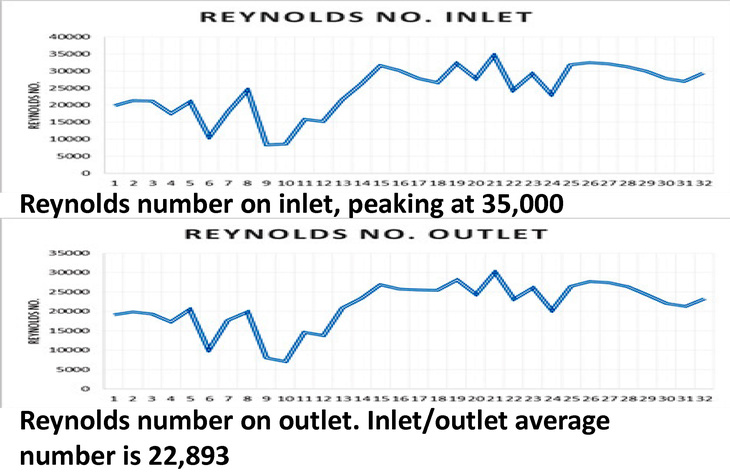
Obtaining the desired cleaniness grade, the flow direction is turned to ensure all contamination is flushed out of the line.
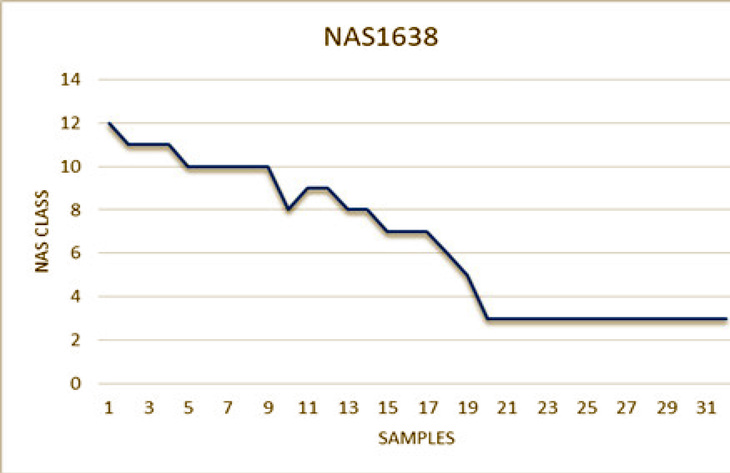
Reaching Nass Class 3
Results
Sample no. 1 shown below, shows the colour of the pipe media after the emptying process. The dark colour is a result of the contamination before flushing with turbulent SCCO2. Sample 32 below is the last sample of the project after flushing with turbulent SCCO2 showing the cleanliness grade to a Nas Class 3, accepted by the operator.
The client recognizes that existing technologies cannot deliver the required cleanliness for chemical 1/2 “ lines in the umbilical.
The client was happy to achive a Nas Class 6 as an average measure for the asphaltene inhibitor and the entire transport system.
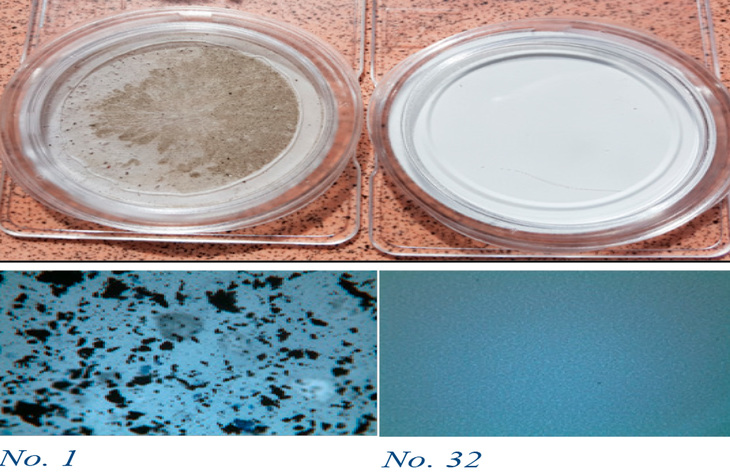
Sample 1 at NAS Class 12, sample 32 at NAS Class 3